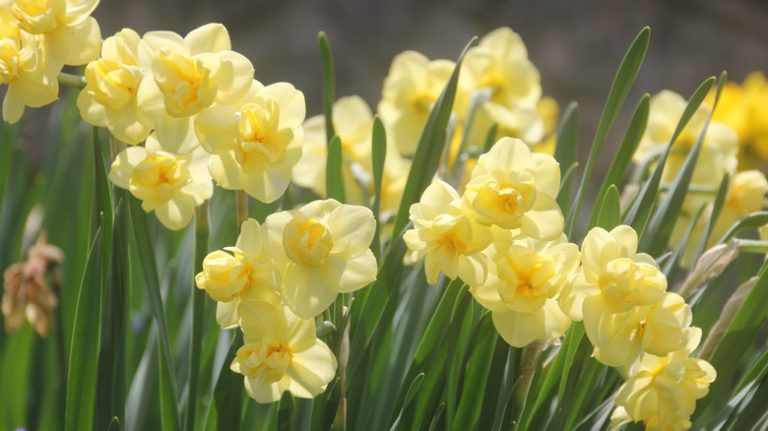Most gardeners have some idea of whether their soil is acidic or alkaline. The only way to know for sure is to get your soil pH tested. Adding certain amendments can help make your soil more acidic or alkaline. But what about a garden where there are already plants growing? We rounded up a few popular garden flowers that thrive in slightly more alkaline soil, and have a quick suggestion to help them thrive: baking soda.
Soil amendments are useful for gardeners wanting to improve soil quality and texture. Coffee grounds, peat moss, and pine needles are common additives to make soil more acidic (loved by plants including blueberries and azaleas), as well as improving drainage. But what about making the soil more alkaline? Alkaline soils often have higher amounts of clay, chalk, or sand. Gardeners once used lime to help “sweeten” acidic soil (i.e. make it more alkaline), but this practice is not as common as it once was. Using wood ash (from untreated wood) is a good way to add alkalinity.
Baking soda doesn’t last as long as lime or wood ash, but it’s easier to use and has quicker results. Don’t overdo it, though; you want to gently increase soil pH levels, not drastically alter the pH balance. Add a tablespoon of baking soda to a gallon of water, and water with it. Or sprinkle a teaspoon around the base of a shrub. The plants listed below will all benefit from a slightly more alkaline soil.
Dianthus
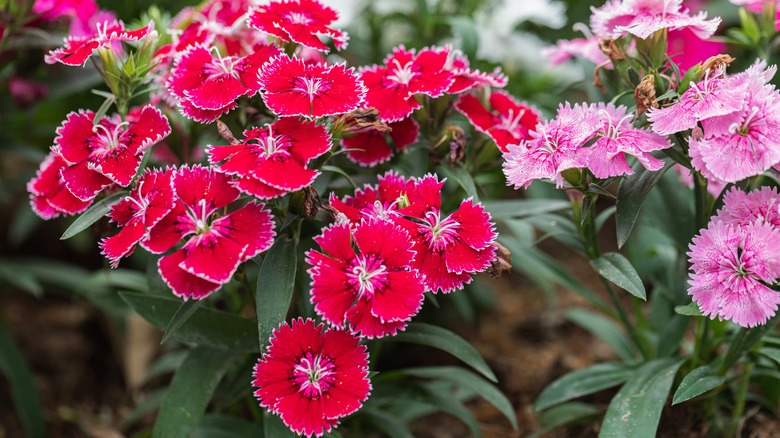
Dianthus are also known as carnations, pinks, or Sweet William, depending on the variety. They can be perennial or annual, and some varieties of dianthus will return for several seasons. This cottage garden favorite is loved for its delicate, floral, clove-like fragrance, and its huge range of colors including whites, pinks, and reds, with many bi-colors. If you deadhead them after the first round of blooms, they’ll form new buds that will extend the flowering season. These summer bloomers like partial to full sun, and do well in a loamy, well-drained, slightly-alkaline soil.
Daylilies
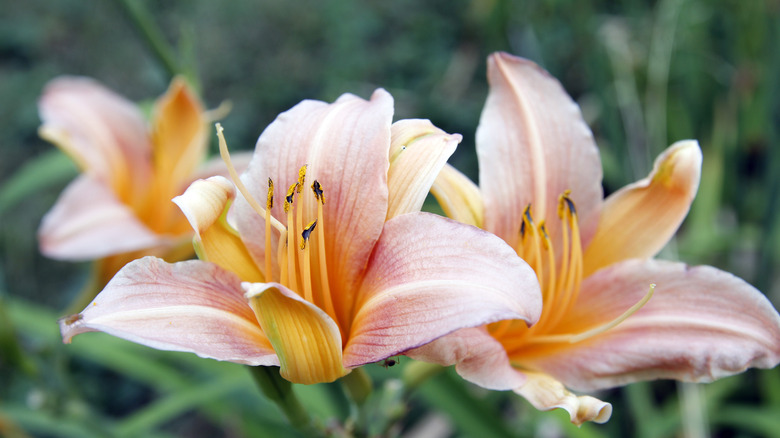
Who doesn’t love daylilies? These robust, easy-to-grow, sun-loving perennials put out new flowers daily from late spring to late summer, depending on the variety. There are also some cultivars that rebloom, like the cheery yellow ‘Stella d’Oro,’ or the ruffly lilac ‘Advanced Party,’ or the two-toned rosy burgundy ‘Always Afternoon,’ among many others. After the last round of blooms is done, cut back your day lily’s foliage so it will quickly grow a neat clump to stay green until frost. Divide them in autumn, every two or three years.
Lilac
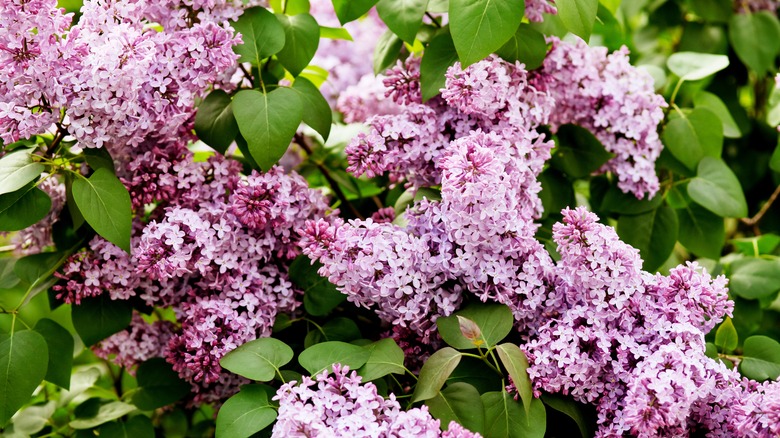
Kseniia Perminova/Shutterstock
Lilacs are fragrant, floriferous shrubs that bloom from early to late May. They love full sun, and can grow quite large, functioning as small trees in the landscape, attracting many songbirds. The heirloom French lilacs are thought to be the most fragrant. The flower colors range from white to pale pink to a range of pale and darker purples and violets. Some hardy and beautiful varieties include ‘President Lincoln’ (soft pastel grey-lavender blooms), ‘Beauty of Moscow’ (large double blooms of white-tinged pale pink), ‘Charles Joly’ (deep reddish violet), and ‘Pocahontas’ (which has a more compact, rounded shape).
Yarrow
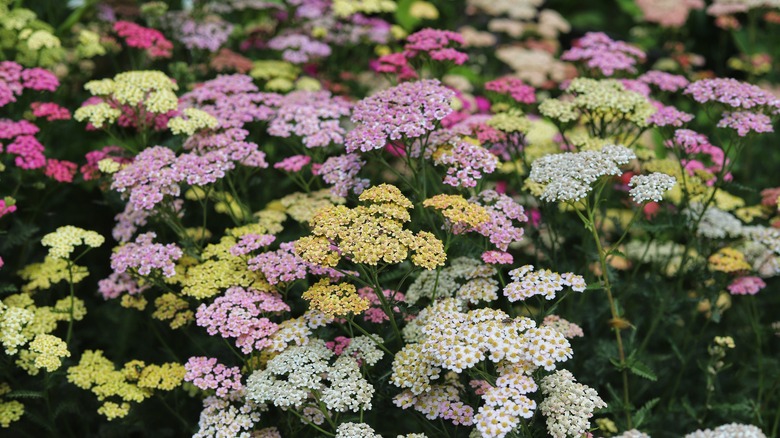
Kabar/Shutterstock
Yarrow (achillea) is a sturdy perennial that flowers for weeks in summer. The blooms are flat or slightly rounded clusters that are composed of many tiny flowers, and the color range is enormous, from pastels to brights. Yarrow is drought-tolerant, and its colorful flowerheads attract pollinators including bees, butterflies, and even hummingbirds. It’s not fussy about soil, and does well in clay and alkaline soils, though it does bloom best in full sun. It’s easily divided, and if you deadhead it after the first round of flowering, it forms new buds and reblooms.
Clematis
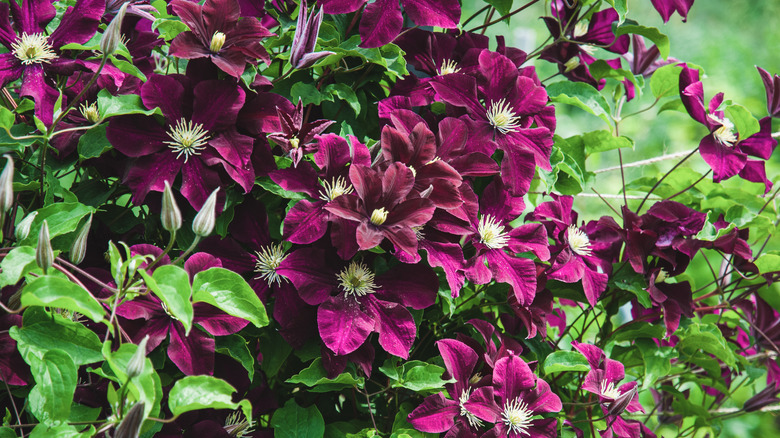
Nadya So/Getty Images
The clematis is a summer-flowering vine that comes in many colors, with single- or double-petalled flowers, from white to deep burgundy, and many pinks and purples. Clematis vines fall into several different groups based on the best pruning methods and timing for them. They prefer full sun, though there are some that will bloom in partial sun, like ‘Nelly Moser’ (white with wide pink stripe), ‘John Paul II’ (pale pink with burgundy center), ‘Sunset’ (magenta), and ‘Stargazer’ (white with dark purple edges). Plant near a fence or arbor, or let the vine interweave with climbing roses.
Hellebore
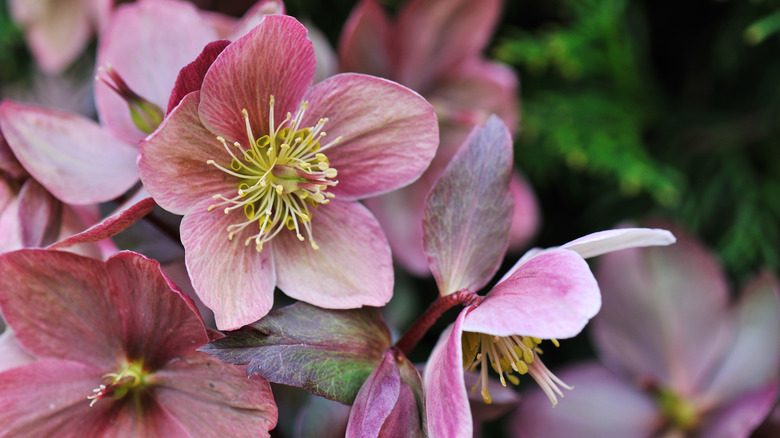
Kongxinzhu/Getty Images
The hellebore is a great plant for the shade garden, blooming happily in partial, dappled, or full shade and lighting up shady spots with fluffy, colorful blooms. It is one of the first perennials to bloom in spring (earning it the common name “Lenten rose” because it blooms during Lent), and even blooms in snow sometimes. The hellebore often has evergreen leaves. The plant thrives best in a well-drained, moist, rich, but slightly alkaline soil. The clumps can grow large over time, and hellebores benefit from dividing every three or four years.
Foxgloves
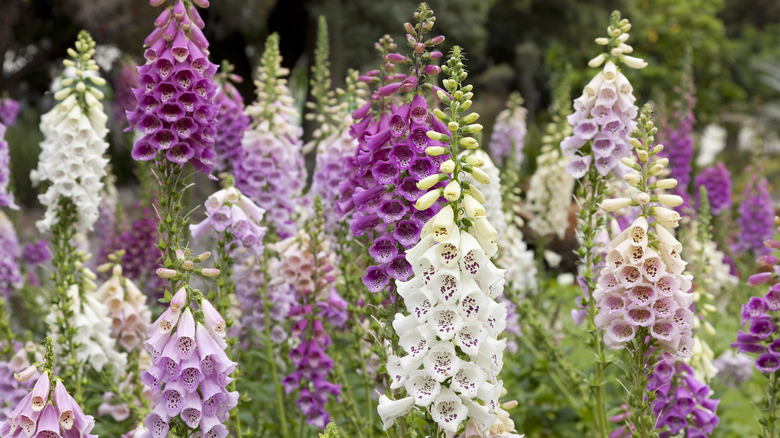
Picturepartners/Getty Images
Foxgloves are a classic cottage garden flower, with tall sturdy spires of delicate tubular flowers in shades of white, yellow, pink, and lavender. They are biennial and often reseed in the garden. Foxgloves are toxic to ingest, so observe caution when growing them. They bloom in partial shade, and like a well-drained soil that is slightly alkaline to slightly acidic (amend acidic soils with a bit of baking soda), with plenty of organic matter. Foxgloves need some space for air circulation to avoid powdery mildew, which can form on the leaves if the plants get too crowded.
Woodland phlox
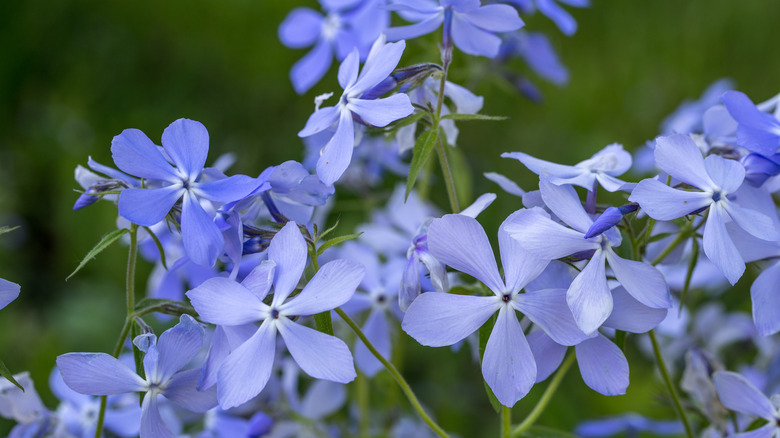
Olga_Ionina/Shutterstock
There are many kinds of phlox, and one of the best spring blooming varieties of phlox is the perennial woodland phlox (Phlox divaricata). The flowers are usually cool white or pale violet blue, and bloom for weeks from mid-April to May. They bloom well in partial shade to partial sun, and like a well-drained loamy soil that is slightly alkaline. This compact, hardy phlox is a staple in the cottage garden, where it blooms happily beneath taller plants. Newer hybrids like ‘Blue Moon’ or ‘Chatahoochee’ have larger, brighter flowers than the heirloom varieties.
Chrysanthemums
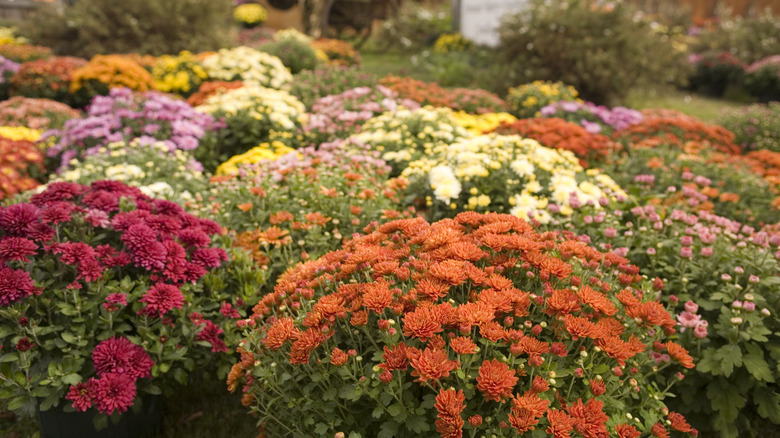
Jtyler/Getty Images
Chrysanthemums provide vibrant color in the late summer garden, and continue blooming after the first frosty nights through late autumn. Sun-loving mums tolerate a wide range of pH in soil, from slightly acidic to slightly alkaline, but they need good drainage and some organic matter to thrive as perennials. Perennial mums should be “pinched back” every couple of weeks until early July, to encourage better branching and more blooms. Mums come in an amazing range of colors, shapes, and forms, including cute round button mums, fluffy cushion mums, sturdy garden mums, regal football mums, and spiky spider mums.
Sedum
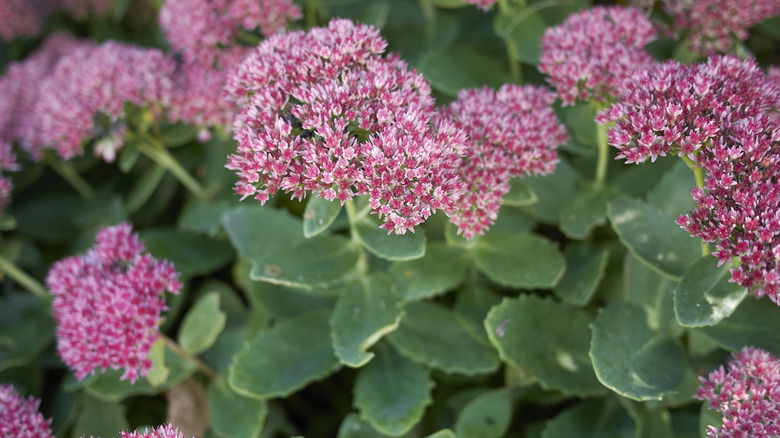
Seven75/Getty Images
Sedum, also known as stonecrop, are succulent perennials that come in a variety of forms from creeping to upright. The upright form usually grows between one to three feet tall, and has flat top flowerheads. Some varieties like ‘Autumn Joy’ and ‘Autumn Fire’ display a dazzling range of colors from late summer through late autumn. Most sedums have grey-green to blue-green foliage but some have purple foliage. They love sun, are very drought-tolerant, thrive in poor and alkaline soils, and are very easy to grow. Leave the dried flowerheads intact for winter interest in the garden.
Pink hydrangea
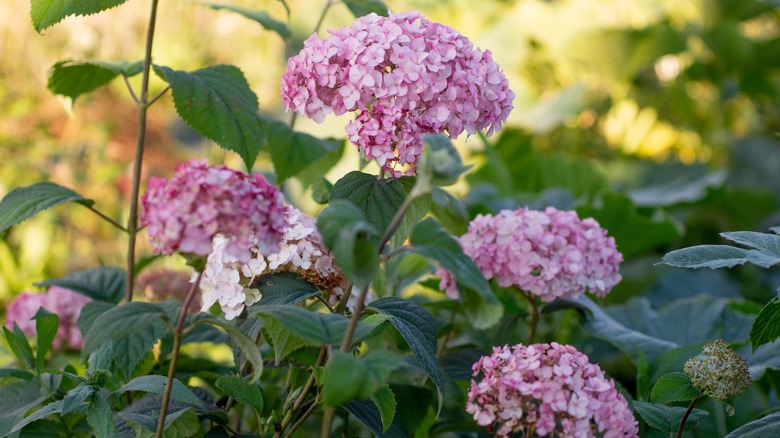
Elena M. Tarasova/Shutterstock
The broadleaf hydrangea (Hydrangea macrophylla) is the variety that gets flowers ranging from pink to blue. The color of the blooms can sometimes depend on the acidity or alkalinity of the soil, and alkaline soil is more likely to produce pink blooms, whereas acidic soil tends to make blue blooms more likely. There are also panicle hydrangeas (Hydrangea paniculata) that have creamy white blooms that turn pink as the season progresses; these do not change color based on soil pH. If you love pink, consider planting a macrophylla or two and sprinkling baking soda into the soil to increase the alkalinity. Hydrangeas like well-drained soil, partial sun or morning sun, and regular watering.
Lavender
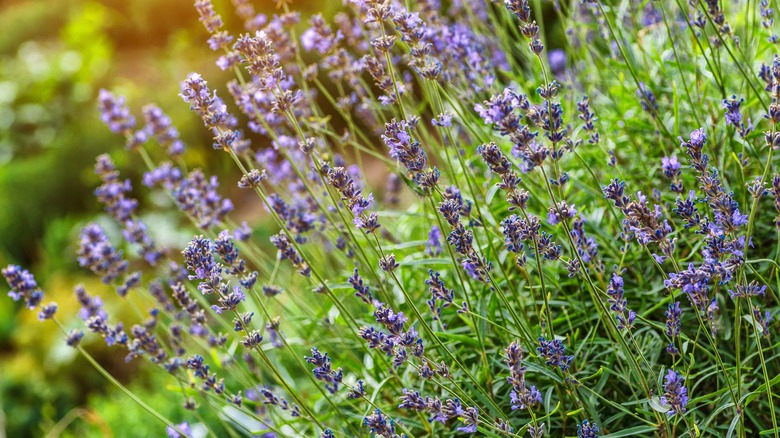
Bukhta Yurii/Shutterstock
Fragrant lavender is a flowering perennial herb known for many practical and medicinal uses, and well as its lovely, delicate flowers in shades of blue and purple. Native to Mediterranean climates, lavender likes full sun, and thrives in sandy, loamy, slightly-alkaline soils. It is fairly drought-tolerant and once established, it grows vigorously in the garden. It does best if the old and dead foliage is kept neatly trimmed; do this in autumn and early spring. Lavender likes a temperate growing zone. The best varieties for cold climates include English lavender varieties like ‘Hidcote’ and ‘Munstead.’



